| diver.net |
| Dive Report: Sea Divers trip to Santa Barbara Island on Dec 5-6, 2009 |
[ Follow Ups ] [ Post Followup ] [ California Scuba Diving BBS ] [ FAQ ]
| diver.net |
| Dive Report: Sea Divers trip to Santa Barbara Island on Dec 5-6, 2009 |
|
Posted by Chris on January 01, 2010 at 00:55:02:
On December 5-6, 2009 the Sea Divers went to Santa Barbara Island aboard the Peace. The following is my dive report from that trip:  The Pacific Knight purse seiner  subadult Larus thayeri (Thayer's Gulls) on the net roller of the Pacific Knight Captain Eric Bowman informed us that the destination was changed from San Miguel Island to Santa Barbara Island because of the swell and wind at Miguel. When I awoke just before dawn we were smoothly cruising toward Santa Barbara Island. There was a bit of a swell, but it has a long period and only a very light wind. Our first dive was at Hidden Reef, a underwater pinnacle about ¾ of a mile off of Webster Point. The top 60 feet of water was warm (59°F; to 60°F), below 60 feet the water cooled slightly and the visibility opened up a bit to about 50 feet. At 110 feet there was very distinct thermocline and the temperature below it dropped to 52°F, however the visibility below the thermocline was 80 feet+. There were many spots that had heads Stylaster californicus (California Hydrocoral). Some of those among the group that were bug diving did well.  Stylaster californicus (California Hydrocoral)  Ophiodon elongatus (Lingcod) 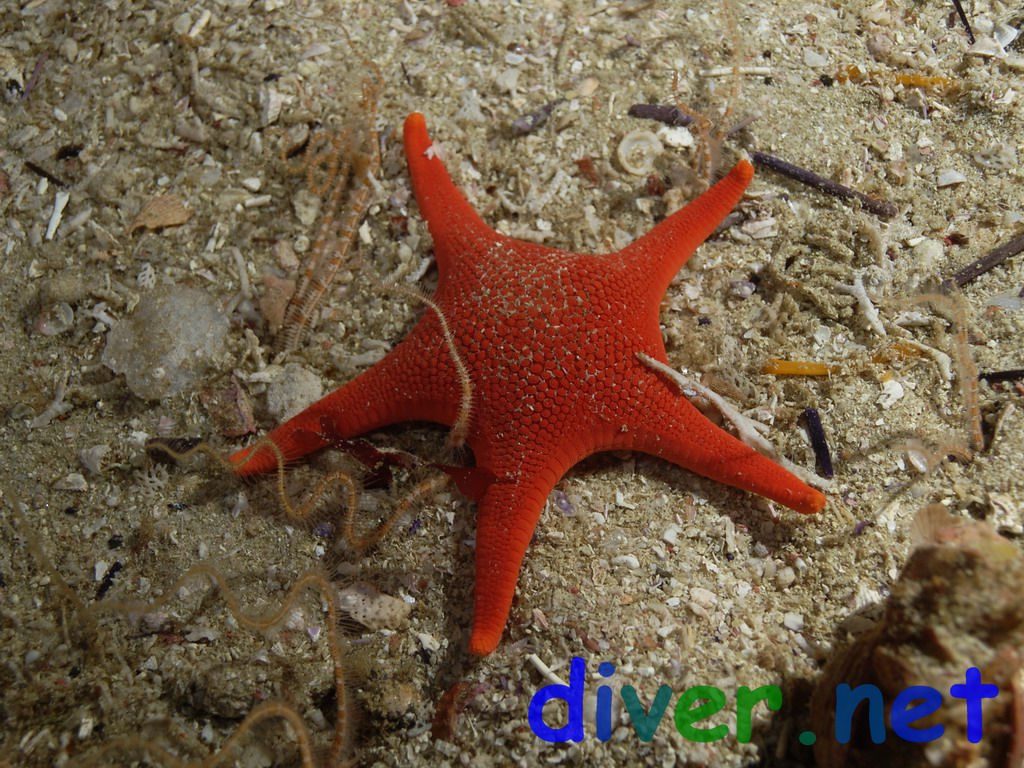 Mediaster aequalis (Vermilion Star, Red Sea Star) & Ophiopsila californica (Brittle Stars)  Chris Cervellone with a bag of bugs (Panulirus interruptus)  Stylaster californicus (California Hydrocoral) For our second dive Captain Eric took us to a spot I call "Big Ass Cave". He anchored on the edge of a wall. The top of the wall was 50 to 60 feet. The bottom was 120 to 130 feet. About 30 yards West on the wall was the cave. The bottom was 120 to 130 feet, the top was at about 90 feet, it was 60 feet across, and went back hundreds of feet. On top of the wall there were many Pycnopodia helianthoides (Sunflower Sea Star) and a Panulirus interruptus (California Spiny Lobster) in a trap. Once I headed over the side I saw the cave and went in a bit, but always well within view of the entrance. There were colonies of Coenocyathus bowersi (Colonial Cup Coral) on the ceiling, walls, and on some of the rocks on the floor. There were many tiny Sebastes hopkinsi (Squarespot Rockfish) upside down hiding in the Coenocyathus bowersi (Colonial Cup Coral) on the roof of the cave. The floor and walls had many Mediaster aequalis (Vermilion Stars, Red Sea Stars). As I was taking pictures two of the bug hunters emerged from farther back in the cave. One had two small bugs, the other was empty handed. Pycnopodia helianthoides (Sunflower Sea Star) sourrounded by Pugetia firma (Red Algae) 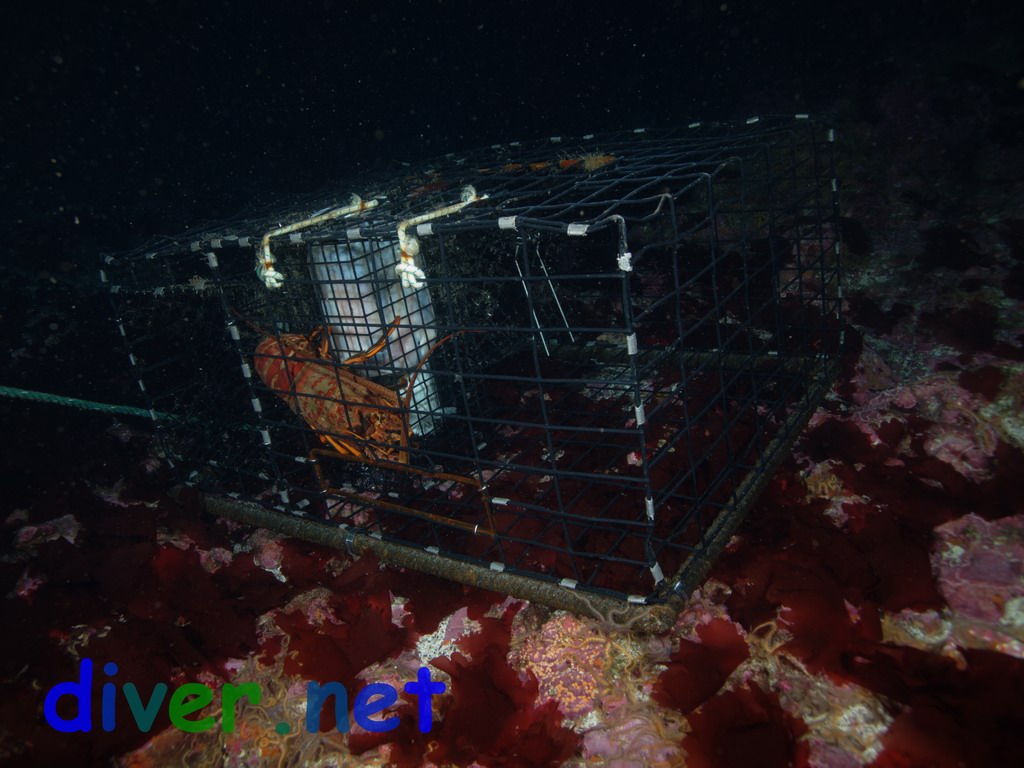 A Panulirus interruptus (California Spiny Lobster) in a trap sourrounded by Pugetia firma (Red Algae)  Coenocyathus bowersi (Colonial Cup Coral) and Berthella californica on the wall of the cave. 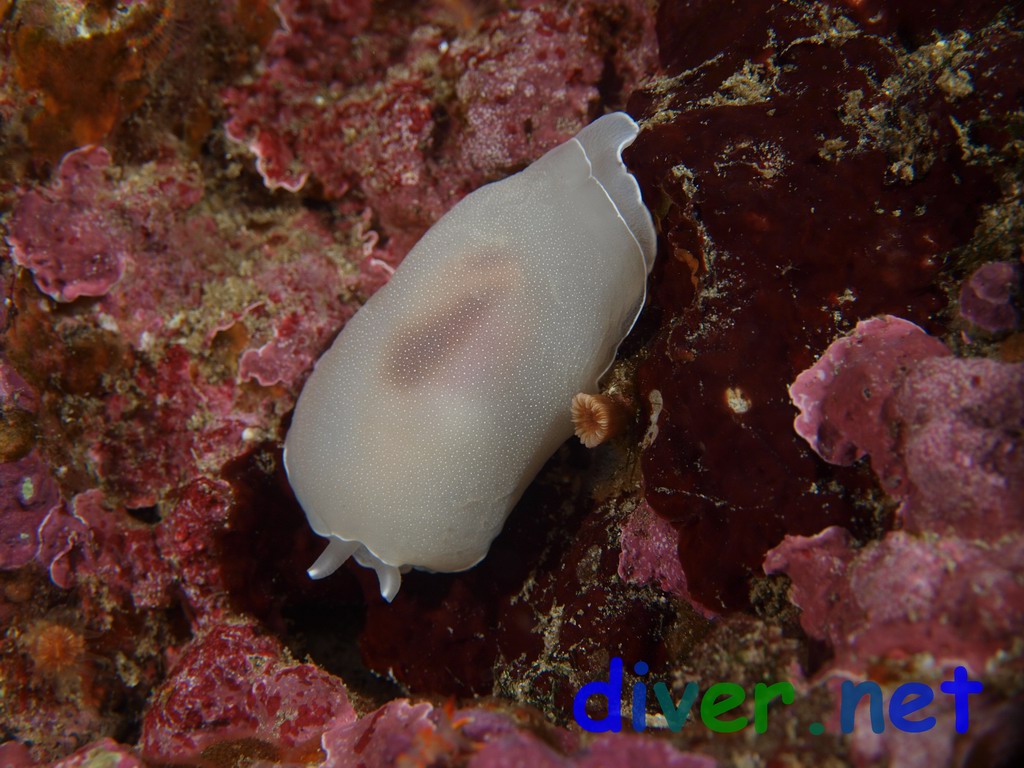 Berthella californica  A Sebastes atrovirens (Kelp Rockfish) hiding in a Lophogorgia chilensis (Red Gorgonian) on the roof of the cave  Upside down Sebastes hopkinsi (Squarespot Rockfish) hiding in the Coenocyathus bowersi (Colonial Cup Coral) on the roof of the cave  Mediaster aequalis (Vermilion Star, Red Sea Star) and unidentified anemones on the cave floor  Ophiopsila californica (Brittle Star), Sebastes rosaceus (Rosy rockfish), and Sebastes hopkinsi (Squarespot Rockfish) For the third dive we moved to the on again/pff again kelp bed outside of Webster Point. On this dive I encountered a small Torpedo californica (Pacific Electric Ray) that was about 80 cm long. I spent most of the dive photographing her. When I returned to the boat other divers told me they had encountered one or more Torpedo californica (Pacific Electric Rays) too. 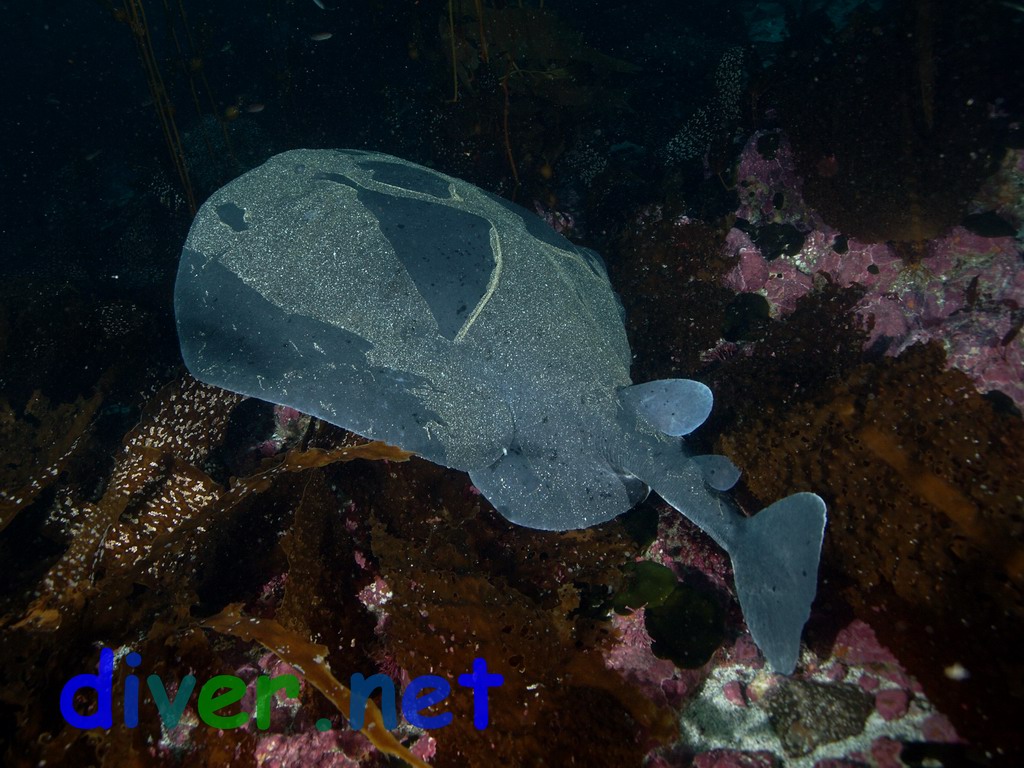 Torpedo californica (Pacific Electric Ray)  Torpedo californica (Pacific Electric Ray)  Torpedo californica (Pacific Electric Ray)  Torpedo californica (Pacific Electric Ray)  Torpedo californica (Pacific Electric Ray)  Torpedo californica (Pacific Electric Ray) 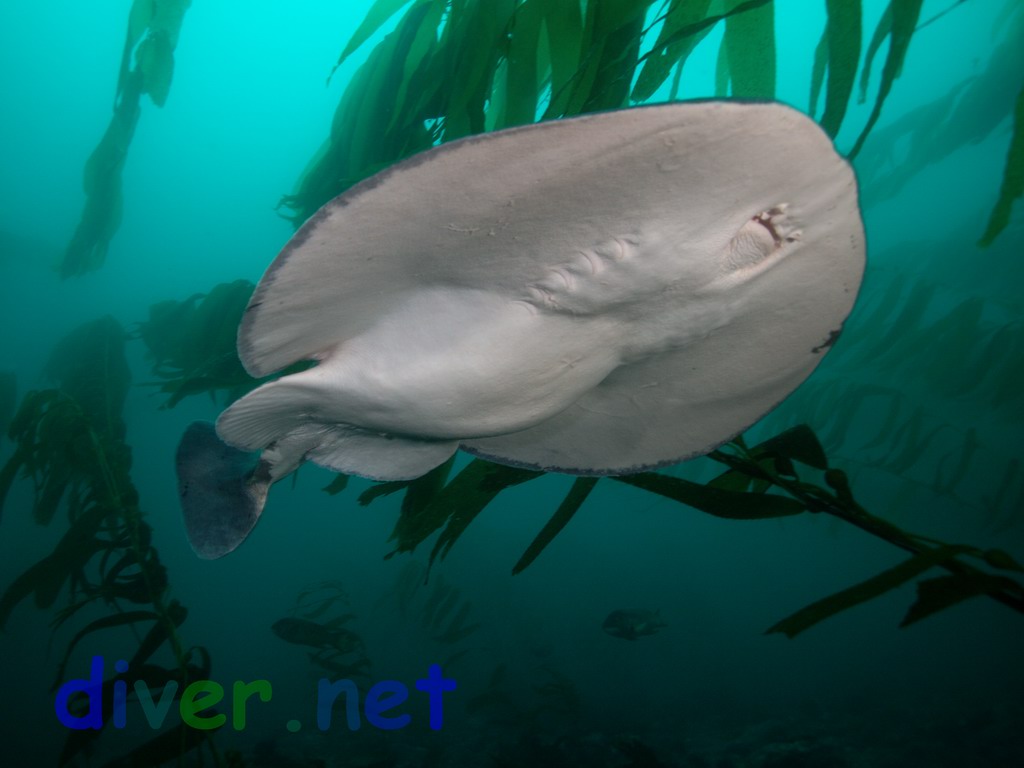 Torpedo californica (Pacific Electric Ray) 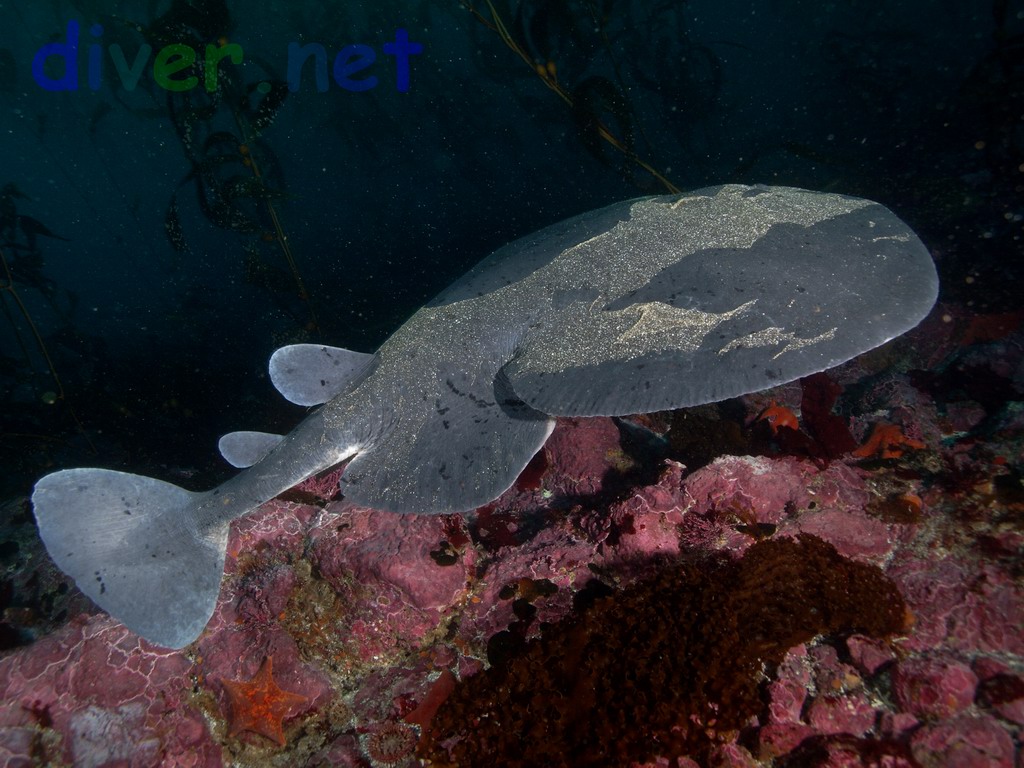 Torpedo californica (Pacific Electric Ray)  Torpedo californica (Pacific Electric Ray)  Torpedo californica (Pacific Electric Ray) For dive 4 I elected to go bug (Panulirus interruptus) hunting instead of take pictures. So I changed my gear, dumped the BC, and set up my backpack. It turns out it was not a great choice since I only saw one short the whole dive, however I did get three nice scallops. For dive 5 I went bug diving again, this time I saw lot's of nice size bugs, mostly out of reach. I came across a three pounder out in front of it's hole, but I missed the grab and farmed it. Then I came across 2½ pounder in a shallow hole and brought it back to the boat. Since my ears were beginning to give me problems on dive 5 I elected to sit out dive 6 so I could dive the following day. That night for dinner Captain Eric anchored the boat just behind Arch Point. When it came time for the night dive no one wanted to go, so Captain Eric went for a dive. He came back with two bugs, and said he saw one large one that was maybe 10 pounds that he left alone, but that there were very few bugs to be seen. For the first dive of day two we went back to a different spot on Hidden Reef. I went down to 128 feet at the base of the reef to start the dive, then worked my way back up to the top at 70 feet as the dive progressed.  A juvenile Sebastes miniatus (Vermillion Rockfish)  Mediaster aequalis (Vermilion Star, Red Sea Star) Sebastes rosaceus (Rosy rockfish) 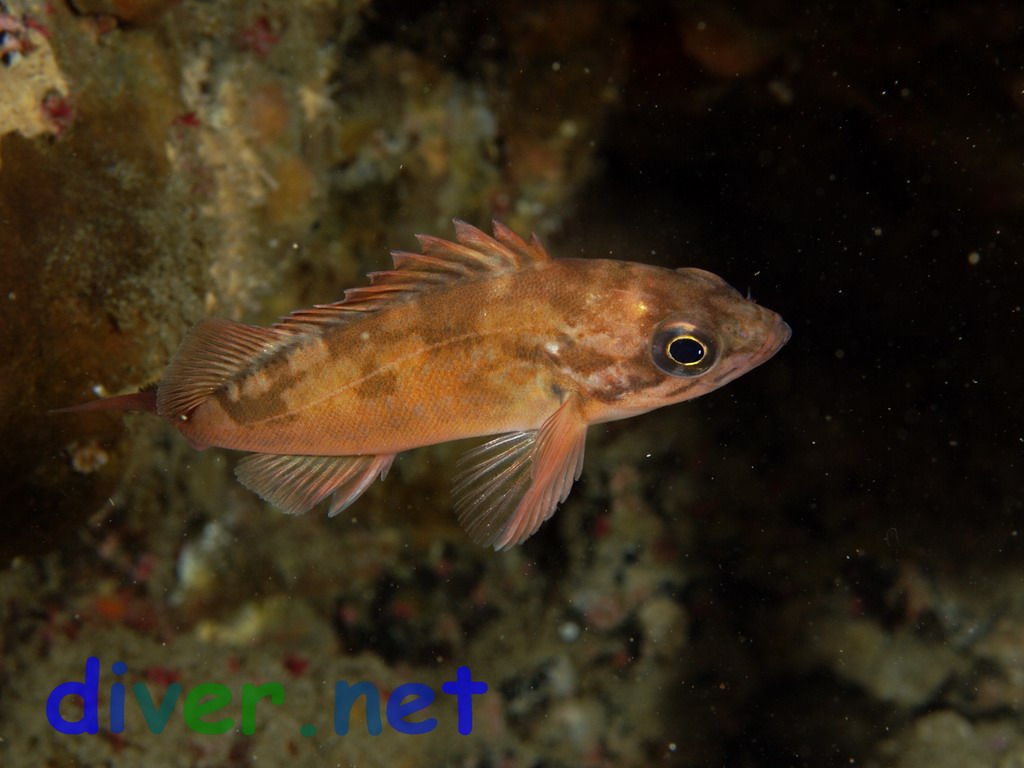 Sebastes hopkinsi (Squarespot Rockfish) A Sebastes atrovirens (Kelp Rockfish) hiding in a Lophogorgia chilensis (Red Gorgonian) 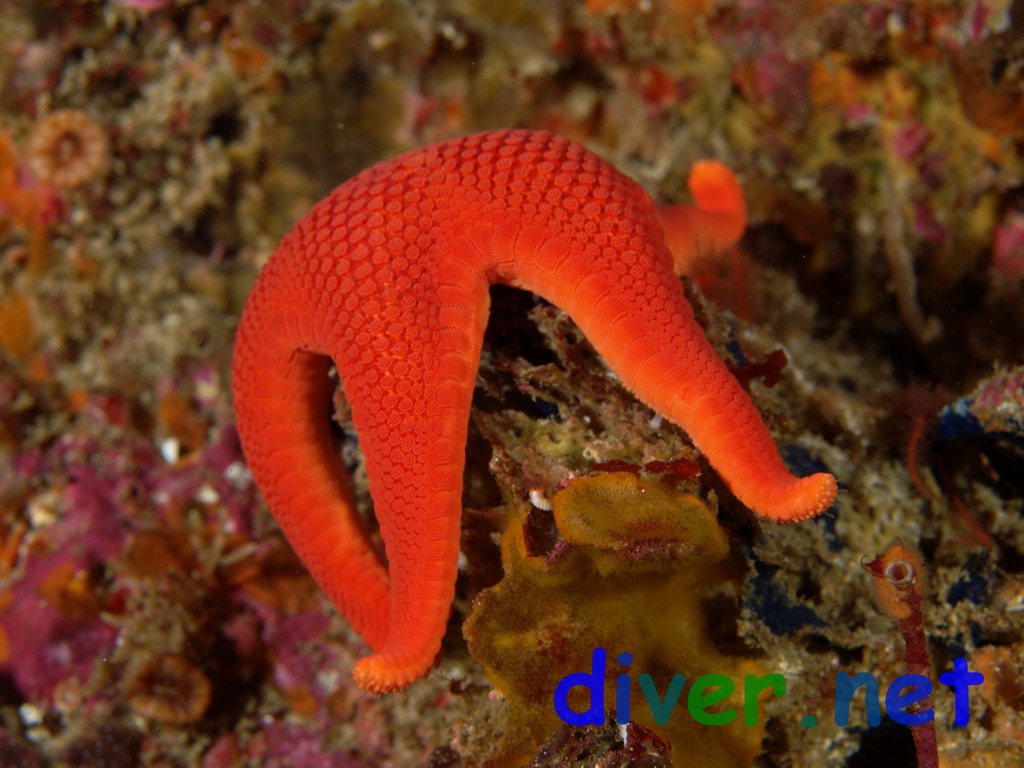 Mediaster aequalis (Vermilion Star, Red Sea Star)  Urticina mcpeaki  Tritonia festiva on Lophogorgia chilensis (Red Gorgonian) The second dive on Sunday was at Black Cavern. I stayed on the plateau above the cavern/swim-through. This area seems to have the second highest concentration of Ophiothrix spiculata (Spiny Brittle Stars), only exceeded at Brittle Star Reef on the opposite side of the island. There are many Urticina mcpeaki anemones here. Urticina mcpeaki Urticina mcpeaki  Asterina miniata (Bat Stars)  Pycnopodia helianthoides (Sunflower Sea Star)  Urticina mcpeaki  Ophiothrix spiculata (Spiny Brittle Star) on Lophogorgia chilensis (Red Gorgonian)  Cucumaria salma (Sea Cucumber) surrounded by Ophiothrix spiculata (Spiny Brittle Star)  Urticina mcpeaki  Strongylocentrotus franciscanus (Red Sea Urchin)  Paguristes ulreyi (Furry Hermit Crab) For dive three Captain Eric moved the boat to 40 to 50 foot area outside of Webster Point. It looked like a moonscape at first, but the macro life was great. 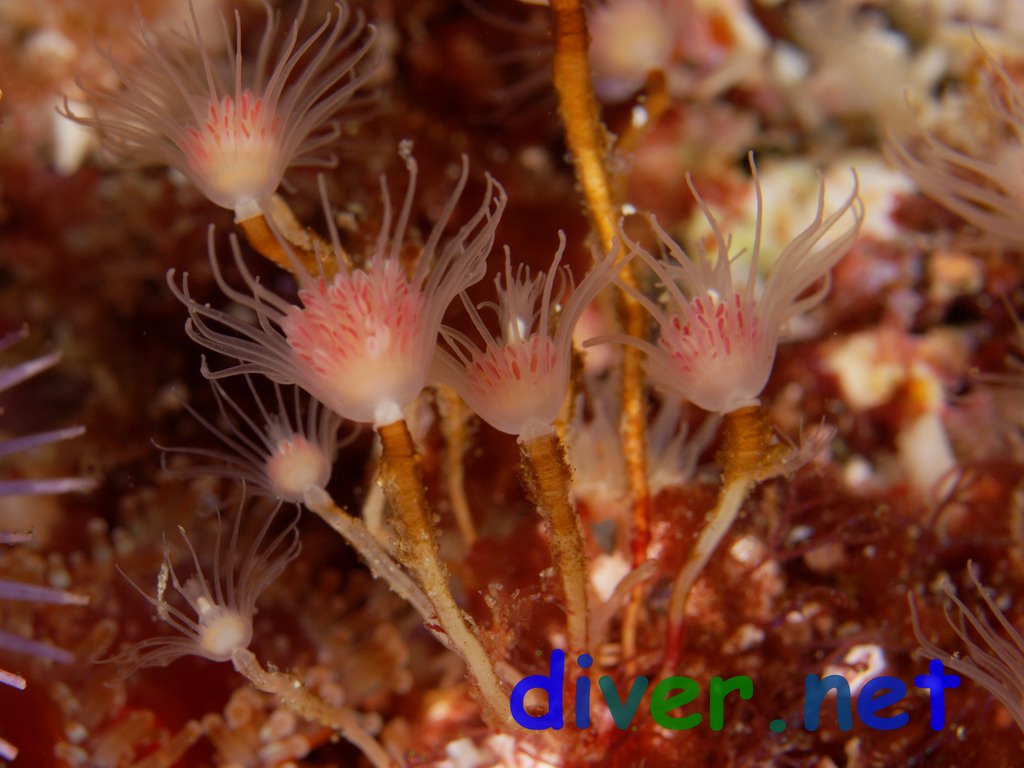 Ectopleura crocea (Pink-Mouthed Hydroid) Strongylocentrotus purpuratus (Purplr Sea Urchin) & Codium setchellii  Juvenile Semicossyphus pulcher (California Sheephead)  Juvenile Sebastes mystinus (Blue Rockfish) 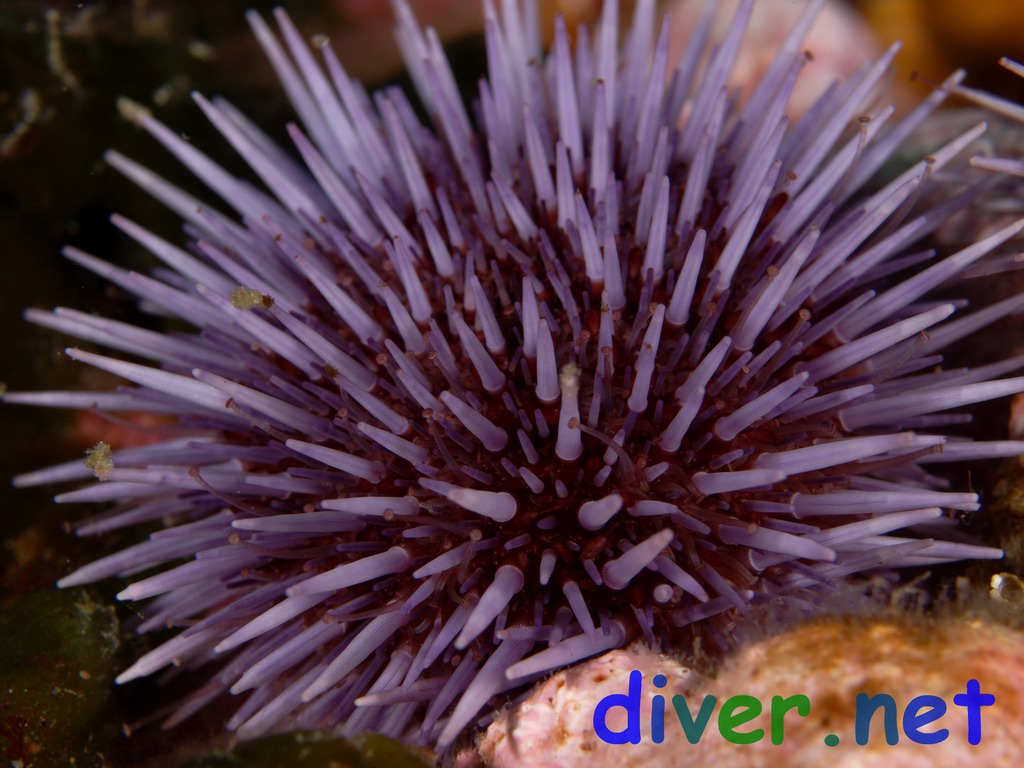 Strongylocentrotus purpuratus (Purplr Sea Urchin) 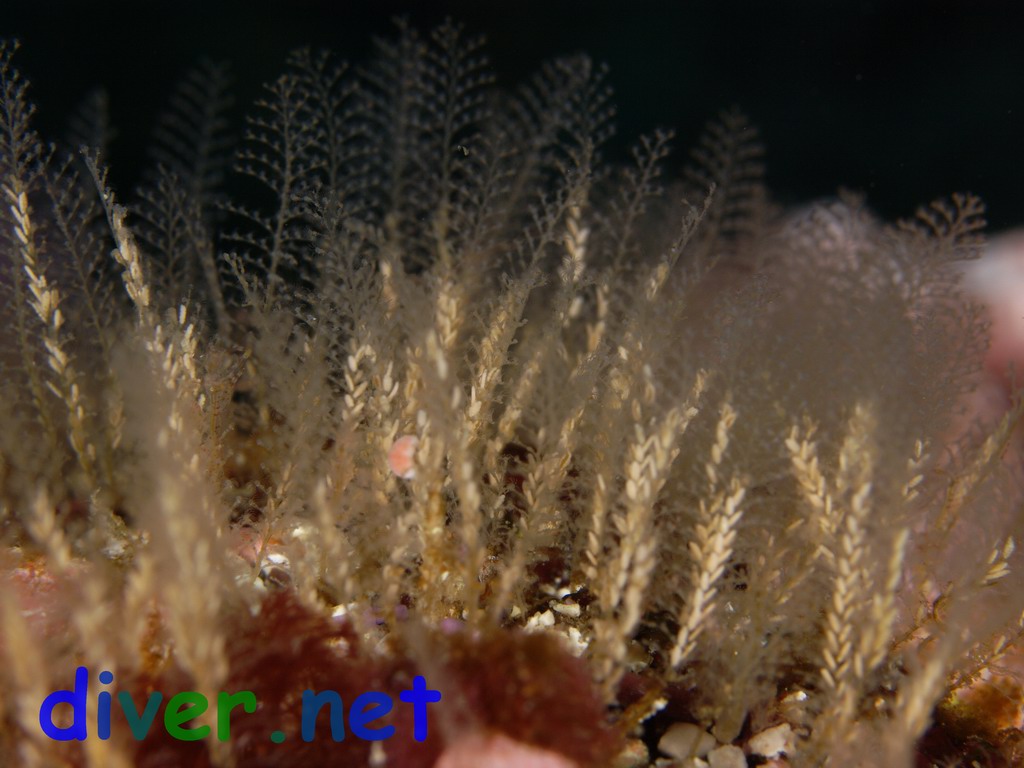 Plumularia sp. (Hydroid) 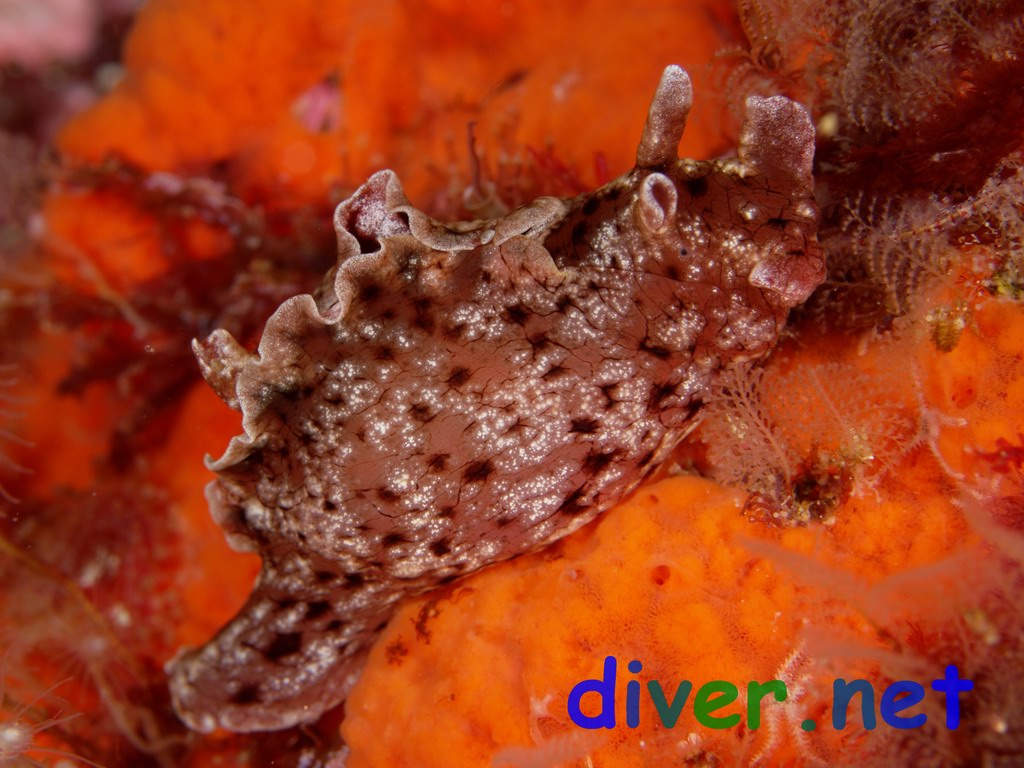 Aplysia californica (California Seahare) on Cyamon argon (Orange Sponge)  Ectopleura crocea (Pink-Mouthed Hydroid) surrounded by Cyamon argon (Orange Sponge)  Cucumaria salma (Sea Cucumber) 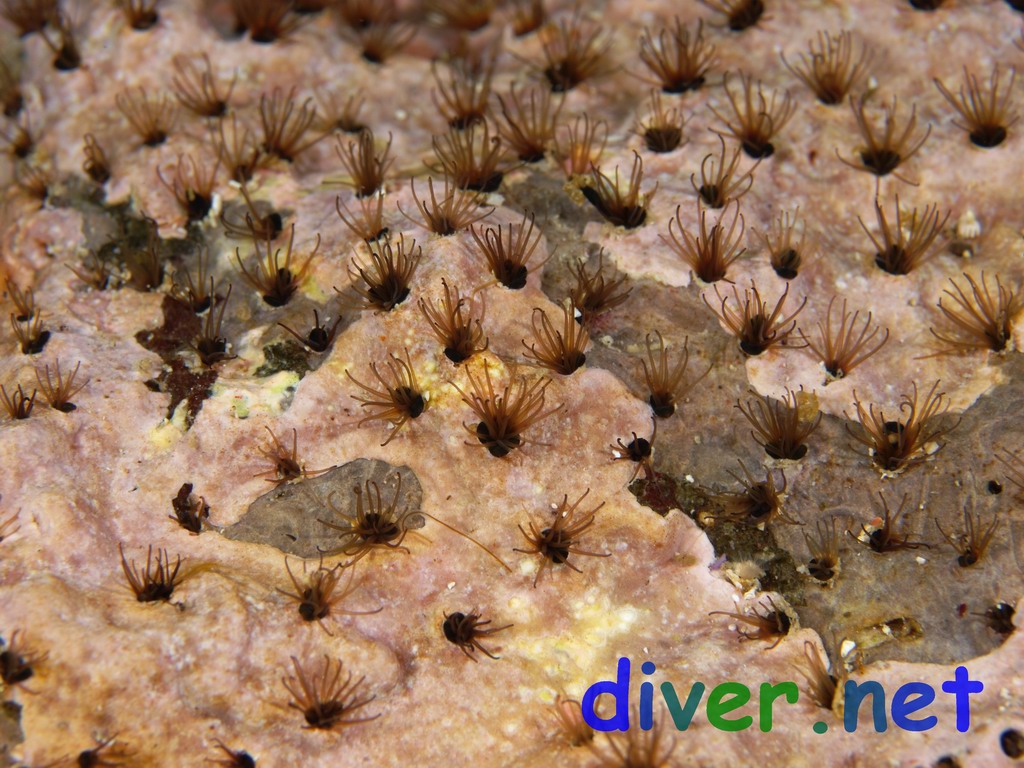 Dodecaceria fewkesi (Colonial Polychaete) 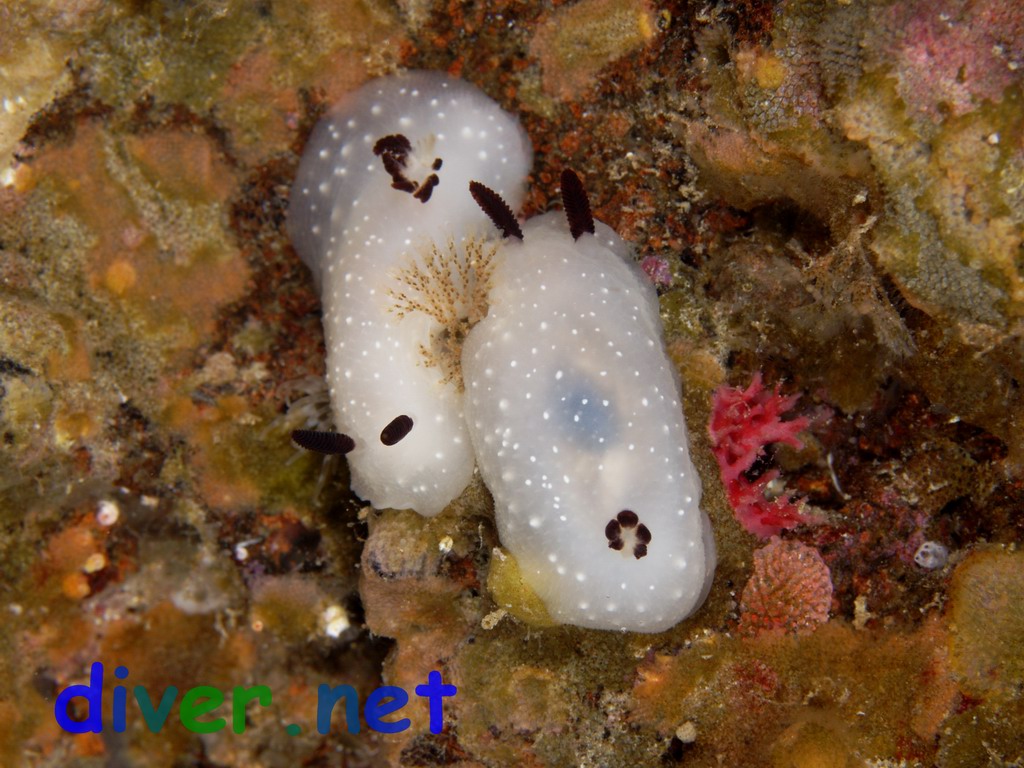 Cadlina limbaughorum  Amphissa versicolor For the fourth dive we moved to Arch Point. I was done diving, but I took a few pictures of some the Sea Divers.  Marcel & Tammy Laframboise  Sea Divers Secretary/Newsletter Editor Andrea Beck  Olly Harris  Jerry Wilson 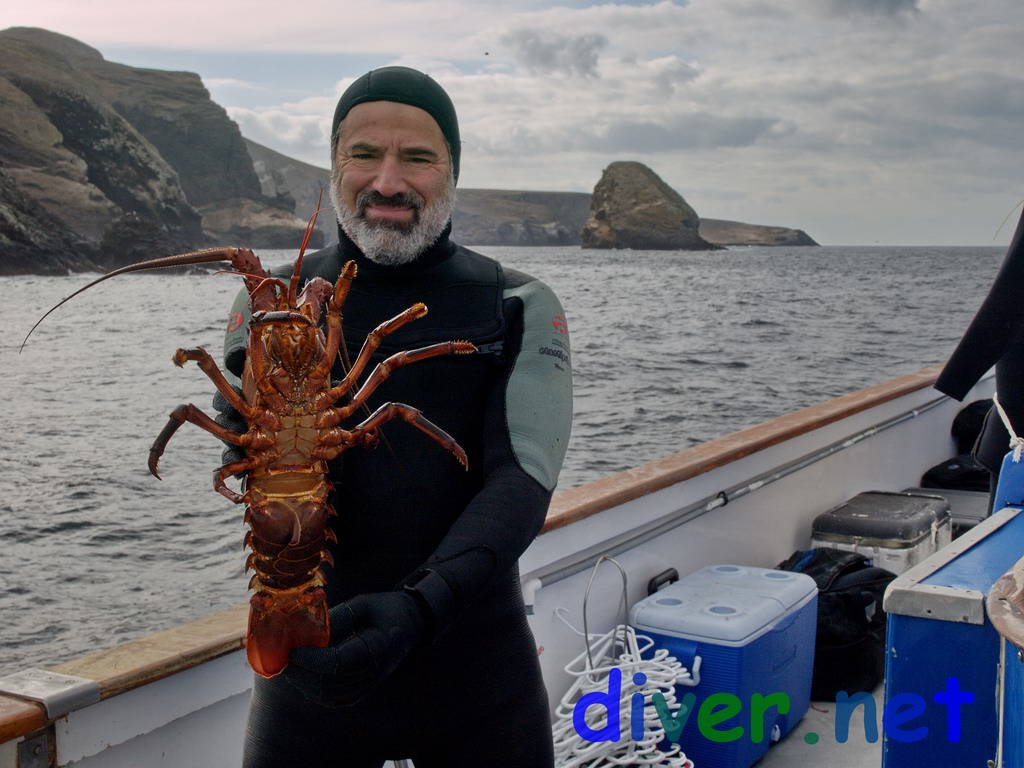 Chris Cervellone  Ted Watler  Don Thompson 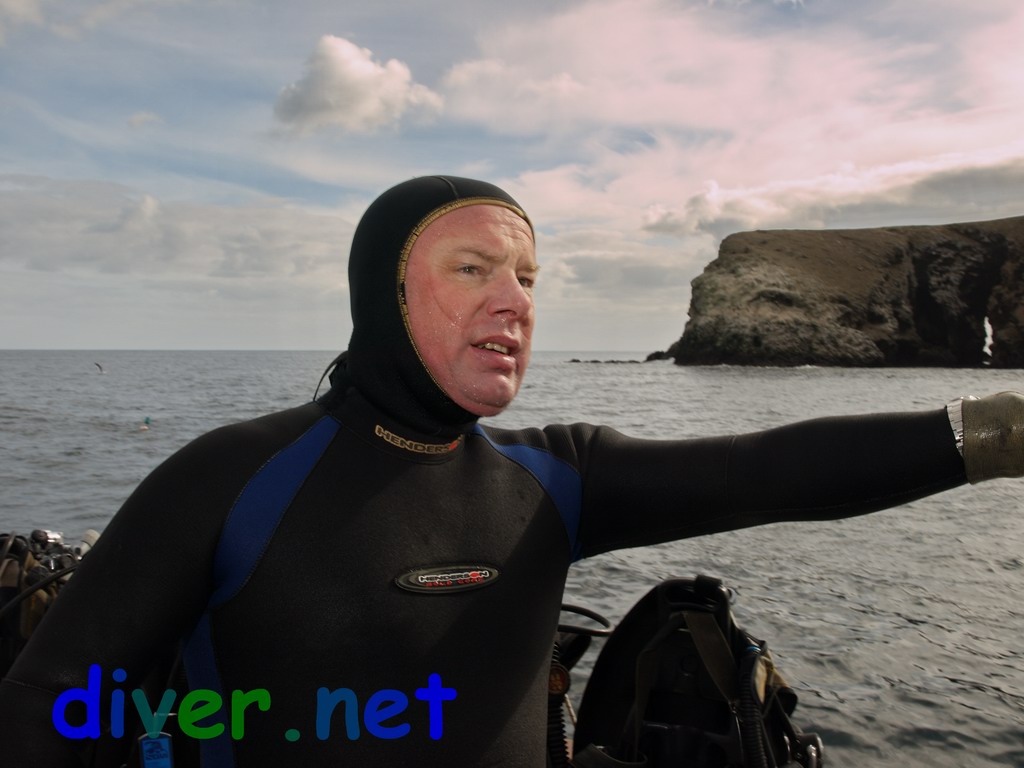 Garry Murdock  Erik Ernest 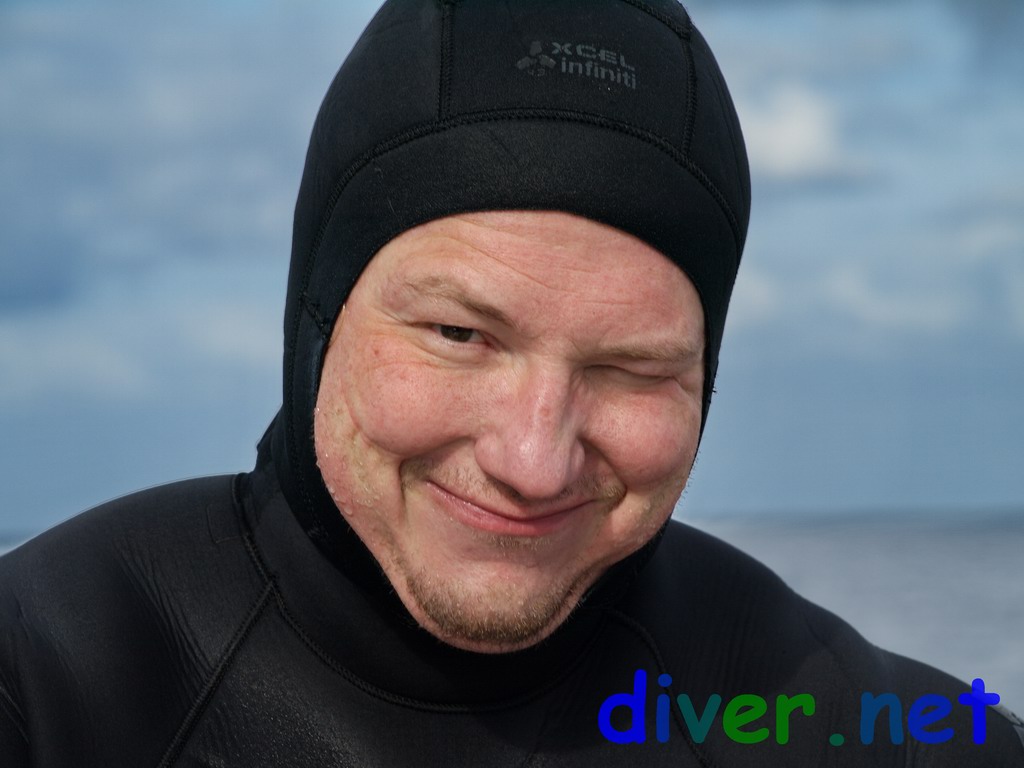 Derin D'Amico After the dive we headed back to Ventura. As night fell we could see the lights from the squid boat armada. 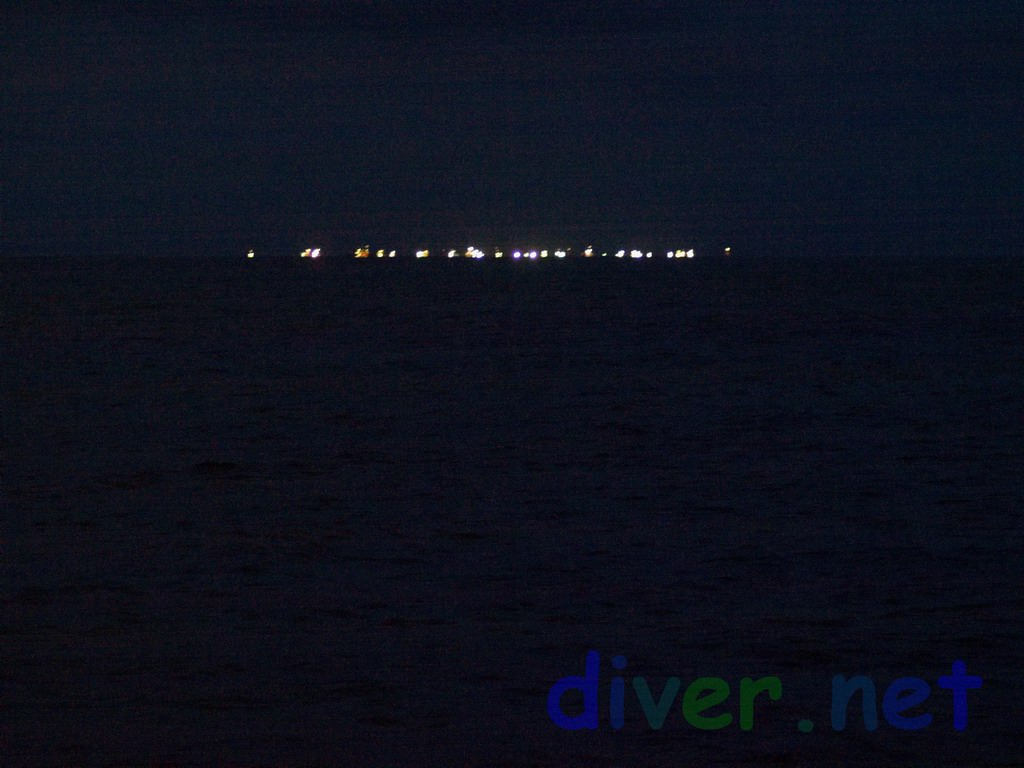 The Squid Boat Armada It was another great Sea Divers trip aboard the Peace. You can see all of the pictures from the Sea Divers trip to Santa Barbara Island here. You should join the Sea Divers on one of thier trips this year. The 2010 Sea Divers Dive Trip Schedule is now online. I hope to see you on one! ©2009 Chris Grossman, diver.net |
| Name: | |
|---|---|
| E-Mail: | |
| Subject: | |
| Message: | |
| Optional Link URL: | |
| Optional Link Title: | |
| Optional Image URL: | |
| Post Background Color: | White Black |
| Post Area Page Width: | Normal Full |
| You must type in the scrambled text key to the right. This is required to help prevent spam bots from flooding this BBS. |
|
| Text Key: |